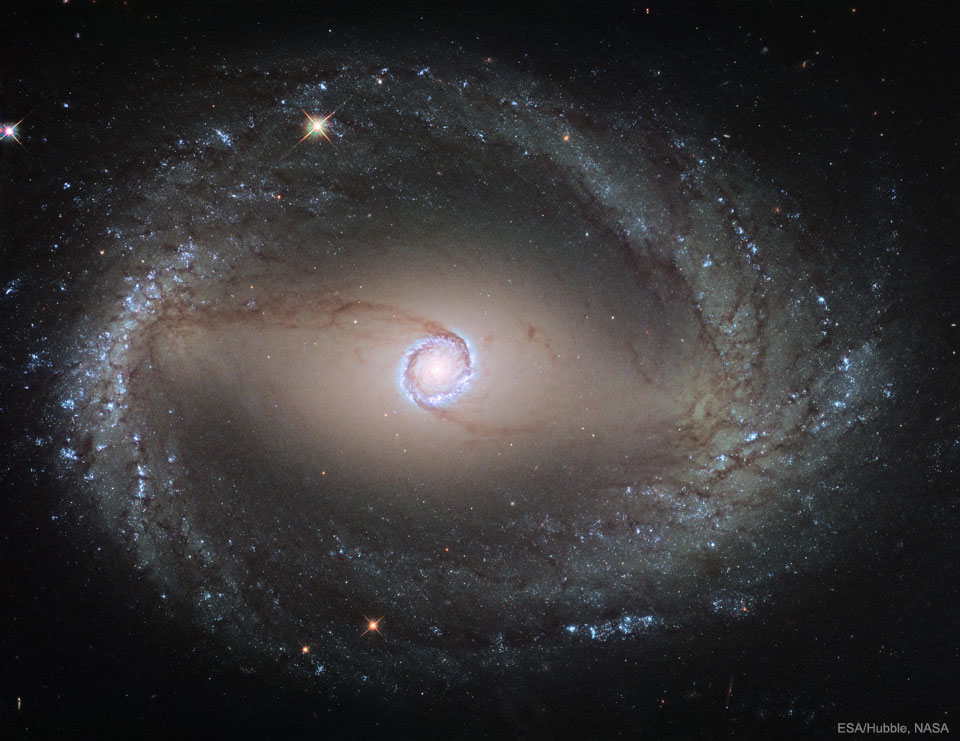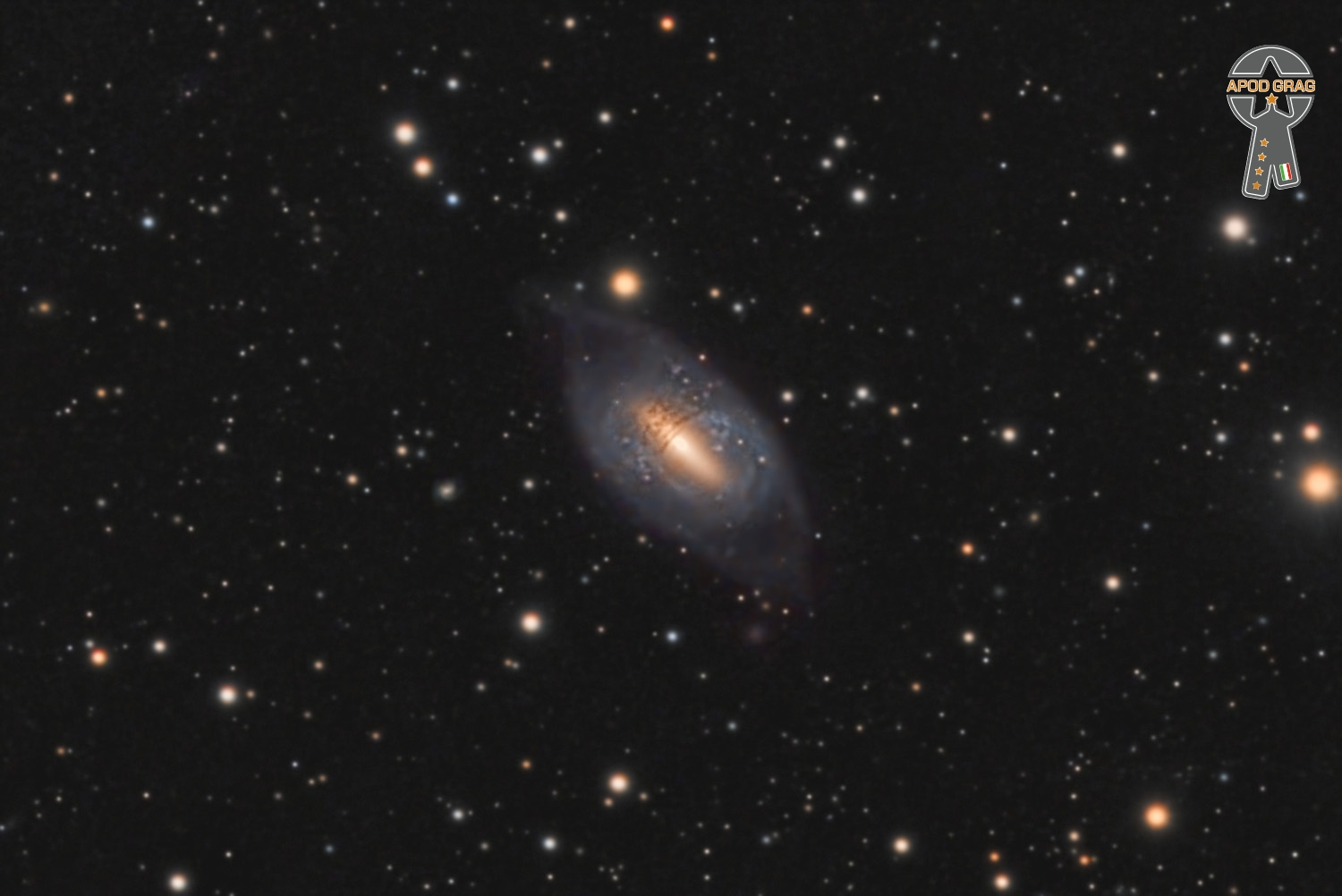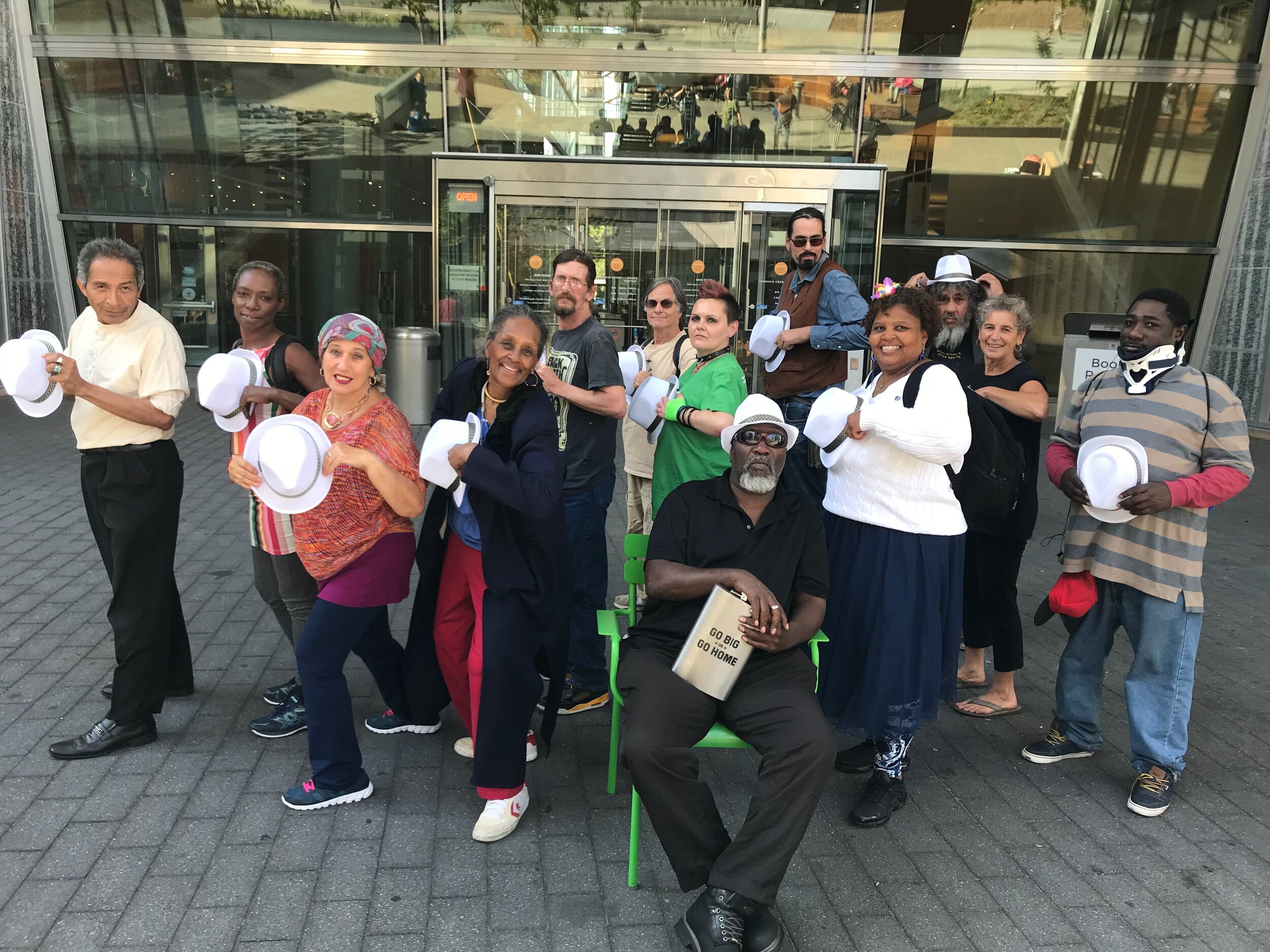Blog
NGC 1512‘s center is a nuclear ring, a ring that surrounds the galaxy center and glows brightly with recently formed stars. Most stars and accompanying gas and dust, however, orbit the galactic center in a ring much further out — here seen near the image edge. This ring is called, counter-intuitively, the inner ring. If you look closely, you will see this the inner ring connects ends of a diffuse central bar that runs horizontally across the galaxy. These ring structures are thought to be caused by NGC 1512‘s own asymmetries in a drawn-out process called secular evolution. The gravity of these galaxy asymmetries, including the bar of stars, cause gas and dust to fall from the inner ring to the nuclear ring, enhancing this ring’s rate of star formation. Some spiral galaxies also have a third ring — an outer ring that circles the galaxy even further out.

Mahmoud Ahmed (Amharic: ማሕሙድ አህመድ; born 8 May 1941) is an Ethiopian singer. He gained great popularity in Ethiopia in the 1970s and among the Ethiopian diaspora in the 1980s, before rising to international fame with African music fans in Europe and the Americas.
Born in Addis Ababa, Mercato district, Mahmoud was enthralled with the music he heard on Ethiopian radio from an early age. Having poorly learned in school, he worked as a shoeshiner before becoming a handyman at the Arizona Club, which was the after hours hangout of Emperor Haile Selassie I‘s Imperial Bodyguard Band. One night in 1962 when the band’s singer didn’t show up, Mahmoud asked to sing a few songs. He soon became part of the band’s regular lineup, where he remained until 1974.
more...Keith Jarrett (born May 8, 1945) is an American jazz and classical music pianist and composer. Jarrett started his career with Art Blakey, moving on to play with Charles Lloyd and Miles Davis. Since the early 1970s he has also been a group leader and a solo performer in jazz, jazz fusion, and classical music. His improvisations draw from the traditions of jazz and other genres, especially Western classical music, gospel, blues, and ethnic folk music.
In 2003, Jarrett received the Polar Music Prize, the first recipient of both the contemporary and classical musician prizes, and in 2004 he received the Léonie Sonning Music Prize. His album, The Köln Concert, released in 1975, became the best-selling piano recording in history. In 2008, he was inducted into the Down Beat Jazz Hall of Fame in the magazine’s 73rd Annual Readers’ Poll.
Jarrett has been unable to perform since suffering a stroke in February 2018. A second stroke, in May 2018, left him partially paralyzed and unable to play with his left hand. Keith Jarrett was born on May 8, 1945, in Allentown, Pennsylvania. to a mother of Slovenian descent. Jarrett’s grandmother was born in Segovci, near Apače in Slovenia. Jarrett’s father was of mostly German descent. He grew up in suburban Allentown with significant early exposure to music.
more...Mary Lou Williams (born Mary Elfrieda Scruggs; May 8, 1910 – May 28, 1981) was an American jazz pianist, arranger, and composer. She wrote hundreds of compositions and arrangements and recorded more than one hundred records (in 78, 45, and LP versions). Williams wrote and arranged for Duke Ellington and Benny Goodman, and she was friend, mentor, and teacher to Thelonious Monk, Charlie Parker, Miles Davis, Tadd Dameron, Bud Powell, and Dizzy Gillespie.
The second of eleven children, Williams was born in Atlanta, Georgia, and grew up in the East Liberty neighborhood of Pittsburgh, Pennsylvania. A musical prodigy, at the age of three, she taught herself to play the piano. Mary Lou Williams played piano out of necessity at a very young age; her white neighbors were throwing bricks into her house until Williams began playing the piano in their homes. At the age of six, she supported her ten half-brothers and sisters by playing at parties. She began performing publicly at the age of seven when she became known admiringly in Pittsburgh as “The Little Piano Girl”. She became a professional musician at the age of 15, citing Lovie Austin as her greatest influence. She married jazz saxophonist John Williams in November 1926.
more...
Robert Leroy Johnson (May 8, 1911 – August 16, 1938 Hazlehurst, MS) was an American blues musician and songwriter. His landmark recordings in 1936 and 1937 display a combination of singing, guitar skills, and songwriting talent that has influenced later generations of musicians. He is now recognized as a master of the blues, particularly the Delta blues style.
As a traveling performer who played mostly on street corners, in juke joints, and at Saturday night dances, Johnson had little commercial success or public recognition in his lifetime. He participated in only two recording sessions, one in San Antonio in 1936, and one in Dallas in 1937, that produced 29 distinct songs (with 13 surviving alternate takes) recorded by famed Country Music Hall of Fame producer Don Law. These songs, recorded at low fidelity in improvised studios, were the totality of his recorded output. Most were released as 10-inch, 78 rpm singles from 1937–1938, with a few released after his death. Other than these recordings, very little was known of him during his life outside of the small musical circuit in the Mississippi Delta where he spent most of his life; much of his story has been reconstructed after his death by researchers. Johnson’s poorly documented life and death have given rise to much legend. The one most closely associated with his life is that he sold his soul to the devil at a local crossroads to achieve musical success.
His music had a small, but influential, following during his life and in the two decades after his death. In late 1938 John Hammond sought him out for a concert at Carnegie Hall, From Spirituals to Swing, only to discover that Johnson had died. Brunswick Records, which owned the original recordings, was bought by Columbia Records, where Hammond was employed. Musicologist Alan Lomax went to Mississippi in 1941 to record Johnson, also not knowing of his death. Law, who by then worked for Columbia Records, assembled a collection of Johnson’s recordings titled King of the Delta Blues Singers that was released by Columbia in 1961. It is widely credited with finally bringing Johnson’s work to a wider audience. The album would become influential, especially on the nascent British blues movement; Eric Clapton has called Johnson “the most important blues singer that ever lived.” Musicians such as Bob Dylan, Keith Richards, and Robert Plant have cited both Johnson’s lyrics and musicianship as key influences on their own work. Many of Johnson’s songs have been covered over the years, becoming hits for other artists, and his guitar licks and lyrics have been borrowed by many later musicians.
Renewed interest in Johnson’s work and life led to a burst of scholarship starting in the 1960s. Much of what is known about him was reconstructed by researchers such as Gayle Dean Wardlow and Bruce Conforth, especially in their 2019 award-winning biography of Johnson: Up Jumped the Devil: The Real Life of Robert Johnson (Chicago Review Press). Two films, the 1991 documentary The Search for Robert Johnson by John Hammond Jr., and a 1997 documentary, Can’t You Hear the Wind Howl, the Life and Music of Robert Johnson, which included reconstructed scenes with Keb’ Mo’ as Johnson, were attempts to document his life, and demonstrated the difficulties arising from the scant historical record and conflicting oral accounts. Over the years, the significance of Johnson and his music has been recognized by numerous organizations and publications, including the Rock and Roll, Grammy, and Blues Halls of Fame; and the National Recording Preservation Board. Johnson died on August 16, 1938, at the age of 27, near Greenwood, Mississippi, of unknown causes. His death was not reported publicly; he merely disappeared from the historical record and it was not until almost 30 years later, when Gayle Dean Wardlow, a Mississippi-based musicologist researching Johnson’s life, found his death certificate, which listed only the date and location, with no official cause of death. No formal autopsy was done; instead, a pro forma examination was done to file the death certificate, and no immediate cause of death was determined. It is likely he had congenital syphilis and it was suspected later by medical professionals that this may have been a contributing factor in his death. However, 30 years of local oral tradition had, like the rest of his life story, built a legend which has filled in gaps in the scant historical record.
more...NGC 2685 is a very unusual galaxy in the constellation Ursa Major.
It is a rare polar ring galaxy – meaning it has a ring of gas, stars and dust orbiting in a plane almost perpendicular to the normal flat plane of NGC 2685. Physically it contains two separate velocity systems whose axes are perpendicular. The most popular view says that such galaxies are the result of an interaction, up to and including a complete merger, with another galaxy.
This feature can be seen in the image as helical filaments around the central part of the galaxy.
NGC 2685 is about 50,000 light years across, and about 42 million light years from Earth.
Image captured on my remote dual rig at Fregenal de la Sierra in Spain between 26 March and 7 April 2022.

Jimmy Lee Ruffin (May 7, 1936 – November 17, 2014) was an American soul singer, and elder brother of David Ruffin of the Temptations. He had several hit records between the 1960s and 1980s, the most successful being the Top 10 hits “What Becomes of the Brokenhearted” and “Hold On (To My Love)“. Jimmy Ruffin was born in 1936 in Collinsville, Mississippi, to Eli, a sharecropper, and Ophelia Ruffin. He was approaching his fifth birthday when his younger brother David was born. As children, the brothers began singing with a gospel group, the Dixie Nightingales.
In 1961, Jimmy became a singer as part of the Motown stable, mostly on sessions but also recording singles for its subsidiary Miracle label, but was then drafted for national service. After leaving the Army in 1964, he returned to Motown, where he was offered the opportunity to join the Temptations to replace Elbridge Bryant. However, after hearing his brother David, they hired him for the job instead so Jimmy decided to resume his solo career. Ruffin recorded for Motown’s subsidiary Soul label, but with little success.
more...William Kreutzmann Jr. (/ˈkrɔɪtsmɑːn/ KROYTS-mahn; born May 7, 1946) is an American drummer and founding member of the Grateful Dead rock band. He played with the Grateful Dead for its entire thirty-year career, usually alongside fellow drummer Mickey Hart, and has continued to perform with former members of the Grateful Dead in various lineups, and with his own bands BK3, 7 Walkers and Billy & the Kids.
Kreutzmann started playing drums at the age of 13. At first he practiced on a Slingerland drum kit lent to him. As a teenager, he was practicing drums alone in a large building at his high school when Aldous Huxley and another man walked in. Huxley told Bill he’d never heard anything like it, and encouraged him in his drumming – despite the fact Bill had been told by his sixth grade music teacher that he could not keep a beat. Kreutzmann continued to practice a great deal. His earliest enthusiasm was for the music of Ray Charles and other R&B musicians. He has explained that later he learned some advanced technique or tricks from Mickey Hart.
more...Johannes Brahms; 7 May 1833 – 3 April 1897) was a German composer, pianist, and conductor of the mid-Romantic period. Born in Hamburg into a Lutheran family, he spent much of his professional life in Vienna. He is sometimes grouped with Johann Sebastian Bach and Ludwig van Beethoven as one of the “Three Bs” of music, a comment originally made by the nineteenth-century conductor Hans von Bülow.
Brahms composed for symphony orchestra, chamber ensembles, piano, organ, voice, and chorus. A virtuoso pianist, he premiered many of his own works. He worked with leading performers of his time, including the pianist Clara Schumann and the violinist Joseph Joachim (the three were close friends). Many of his works have become staples of the modern concert repertoire.
Brahms has been considered both a traditionalist and an innovator, by his contemporaries and by later writers. His music is rooted in the structures and compositional techniques of the Classical masters. Embedded within those structures are deeply romantic motifs. While some contemporaries found his music to be overly academic, his contribution and craftsmanship were admired by subsequent figures as diverse as Arnold Schoenberg and Edward Elgar. The diligent, highly constructed nature of Brahms’s works was a starting point and an inspiration for a generation of composers.
more...Pyotr Ilyich Tchaikovsky; 7 May 1840 – 6 November 1893) was a Russian composer of the Romantic period. He was the first Russian composer whose music would make a lasting impression internationally. He wrote some of the most popular concert and theatrical music in the current classical repertoire, including the ballets Swan Lake and The Nutcracker, the 1812 Overture, his First Piano Concerto, Violin Concerto, the Romeo and Juliet Overture-Fantasy, several symphonies, and the opera Eugene Onegin.
Although musically precocious, Tchaikovsky was educated for a career as a civil servant. There was scant opportunity for a musical career in Russia at the time and no system of public music education. When an opportunity for such an education arose, he entered the nascent Saint Petersburg Conservatory, from which he graduated in 1865. The formal Western-oriented teaching that he received there set him apart from composers of the contemporary nationalist movement embodied by the Russian composers of The Five with whom his professional relationship was mixed.
Tchaikovsky’s training set him on a path to reconcile what he had learned with the native musical practices to which he had been exposed from childhood. From that reconciliation, he forged a personal but unmistakably Russian style. The principles that governed melody, harmony and other fundamentals of Russian music ran completely counter to those that governed Western European music, which seemed to defeat the potential for using Russian music in large-scale Western composition or for forming a composite style, and it caused personal antipathies that dented Tchaikovsky’s self-confidence. Russian culture exhibited a split personality, with its native and adopted elements having drifted apart increasingly since the time of Peter the Great. That resulted in uncertainty among the intelligentsia about the country’s national identity, an ambiguity mirrored in Tchaikovsky’s career.
Despite his many popular successes, Tchaikovsky’s life was punctuated by personal crises and depression. Contributory factors included his early separation from his mother for boarding school followed by his mother’s early death; the death of his close friend and colleague Nikolai Rubinstein; and the collapse of the one enduring relationship of his adult life, his 13-year association with the wealthy widow Nadezhda von Meck, who was his patroneven though they never met. His homosexuality, which he kept private, has traditionally also been considered a major factor though some musicologists now downplay its importance. Tchaikovsky’s sudden death at the age of 53 is generally ascribed to cholera, but there is an ongoing debate as to whether cholera was indeed the cause, and also whether the death was accidental or intentional.
While his music has remained popular among audiences, critical opinions were initially mixed. Some Russians did not feel it was sufficiently representative of native musical values and expressed suspicion that Europeans accepted the music for its Western elements. In an apparent reinforcement of the latter claim, some Europeans lauded Tchaikovsky for offering music more substantive than base exoticism and said he transcended stereotypes of Russian classical music. Others dismissed Tchaikovsky’s music as “lacking in elevated thought” and derided its formal workings as deficient because they did not stringently follow Western principles.
more...NGC 3572. A beautiful emission nebula and star cluster it sails far southern skies within the nautical constellation Carina. Stars from NGC 3572 are toward top center in the telescopic frame that would measure about 100 light-years across at the cluster’s estimated distance of 9,000 light-years. The visible interstellar gas and dust is part of the star cluster’s natal molecular cloud. Dense streamers of material within the nebula, eroded by stellar winds and radiation, clearly trail away from the energetic young stars. They are likely sites of ongoing star formation with shapes reminiscent of the Tadpoles of IC 410 better known to northern skygazers. In the coming tens to hundreds of millions of years, gas and stars in the cluster will be dispersed though, by gravitational tides and by violent supernova explosions that end the short lives of the massive cluster stars.

David Friesen (born May 6, 1942 in Tacoma, Washington) is an American jazz bassist. He plays double bass and electric upright bass.
Friesen began playing bass while serving in the United States Army in Germany. He played with John Handy and Marian McPartland and following this, with Joe Henderson; in 1975, he toured in Europe with Billy Harper. His first album as a session leader appeared that year. In 1976, he began collaborating with guitarist John Stowell; the pair would work together often. He appeared with Ted Curson at the Monterey Jazz Festival in 1977. Following this, he worked with Ricky Ford, Duke Jordan, Mal Waldron, and Paul Horn. His 1989 album Other Times, Other Places reached No. 11 on the U.S. Billboard Top Jazz Albums chart. He has also played with Chick Corea, Michael Brecker, Stan Getz, Dexter Gordon, Kenny Garrett, Dizzy Gillespie, and Mal Waldron.
more...Hasaan Ibn Ali (born William Henry Langford, Jr.; May 6, 1931 – 1980) was an American jazz pianist and composer.
Ibn Ali was strongly influenced by Elmo Hope, and his playing was rapid and intense, retaining a sense of rhythm even when his style became increasingly unconventional. Only one recording of his playing – The Max Roach Trio Featuring the Legendary Hasaan – was released in his lifetime. Ibn Ali built a reputation in Philadelphia, where he influenced musicians including John Coltrane, but he remained little known elsewhere.
Hasaan Ibn Ali was born William Henry Langford, Jr. in Philadelphia on May 6, 1931. His mother was a domestic worker.[4] In 1946 (aged 15), he toured with trumpeter Joe Morris‘s rhythm and blues band. In 1950, he played locally with Clifford Brown, Miles Davis, J. J. Johnson, Max Roach, and others. Based in Philadelphia, Ibn Ali freelanced and acquired a reputation locally as “an original composer and theorist”, in musicologist Lewis Porter‘s words. The pianist performed with Horace Arnold in New York City in 1959, and again in 1961–62, in a trio with Henry Grimes.
more...Tientos, a slow cante jondo music and dance in a four-count rhythm, was first developed by the singer Enrique el Mellizo (1848 -1906) as an expressive variation of the Tangos. Poet Federico García Lorca considered the Tientos to be almost liturgical in its solemnity. Traditional Tientos lyrics – letras – set a dark mood, and have to do with loss, unrequited love, imprisionment, longing for freedom and other serious messages. Dancers strive to capture this mood in their solos.
more...Performance of Challenge to Change by Zamya Theater Homeless Theater Project @ Opportunity Center at Catholic Charities in St Paul 130pm performance. Music by mick laBriola.

More Posts
- Benny Golson Day
- Antonio Carlos Jobim Day
- Sleepy John Estes Day
- World Music with El Indio Gitano
- Daily Roots with the Harmonians
- Echos of Freedom by Nina Simone
- The Cosmos with M51
- Joe Albany Day
- Jimmy Forrest Day
- Avery Parrish Day
- Oliver “Tuku” Mtukudzi Day
- Daily Roots with the Soul Rhythms
- Echos of Freedom by Lincoln
- The Cosmos with the Moon Meteorite Strike
- Gary Burton Day
- Curtis Counce Day
- Django Reinhardt Day
- World Music with Hussein Rassim
- Daily Roots with Ken Lazarus
- Echos of Freedom with John Hollow Horn